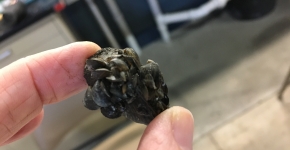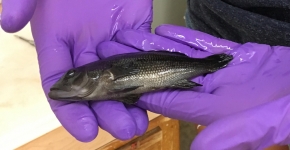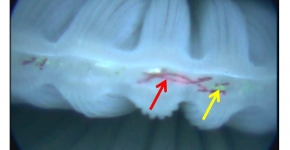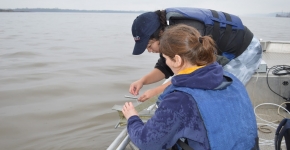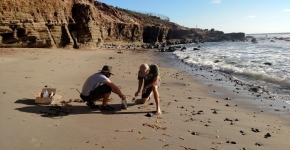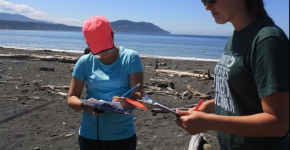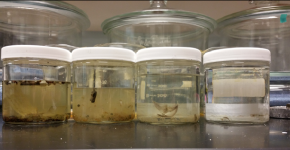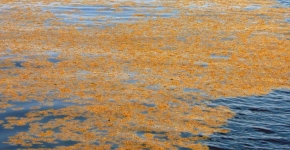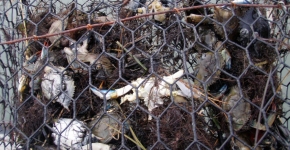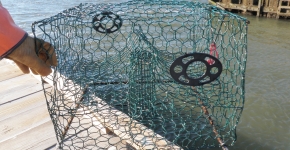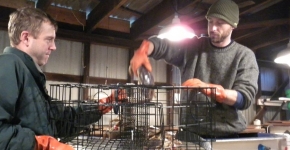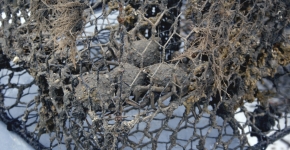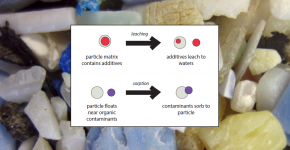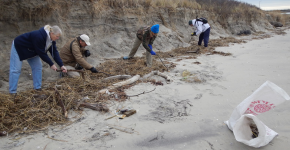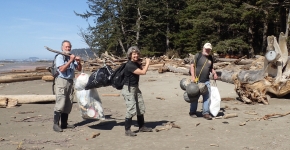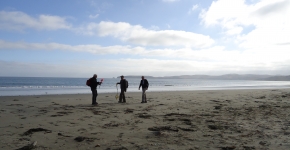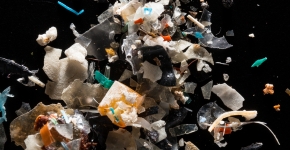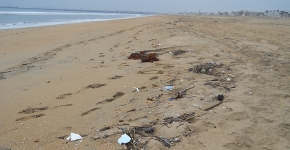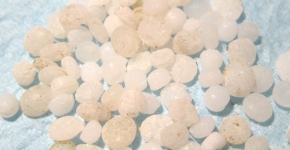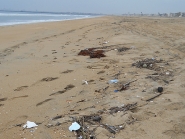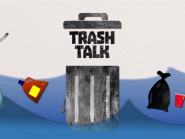A NOAA debris monitoring project helps answer questions about debris on our shorelines.

Research
Each fiscal year (October through September), the Marine Debris Program supports research projects across the country that address marine debris, its sources, and its impacts. These projects work to investigate many unanswered questions about marine debris so we can better understand it and mitigate its impacts, focusing on marine debris monitoring, fishing gear improvement and alternatives, life cycle analysis, chemical impacts, and economic impacts.
(Photo Credit: NOAA)
Special Projects
Highlights from some of the longer-term MDMAP shoreline monitoring projects with federal, state, and academic partners to monitor and analyze marine debris on shorelines across the United States.
Resources - Links
see also:
2018 Active Projects
-
This collaborative study between the NOAA Mussel Watch Program, Loyola University Chicago, and the NOAA Marine Debris Program, will use invasive mussels as a monitoring tool for microplastic pollution across the Milwaukee Estuary, Wisconsin.
2017 Active Projects
-
Researchers from Woods Hole Oceanographic Institution are conducting experiments to provide the data needed to calculate the risk of microplastic ingestion to scallop stock populations.
-
Researchers from the University of North Carolina Wilmington (UNCW) are investigating microplastic ingestion by black sea bass, both by direct consumption and through transfer from prey to predator.
-
Scientists at the University of Connecticut are determining the types and concentrations of microplastics ingested by oysters, how microplastic characteristics may influence ingestion, and the effects on oysters’ digestive processes.
-
Researchers from Arizona State University are using a risk assessment framework to quantify microplastics in water, sediment, and bivalves in American Samoa, as well as assess any associated organic contaminants.
2016 Active Projects
-
Scientists are collecting and analyzing water samples from 11 locations along the Mississippi River to quantify and characterize microplastic debris that may eventually flow into the Gulf of Mexico.
Completed Research Projects - Archives
Click the bars below to view completed projects from that year.
2015 Projects
The National Park Service and Clemson University worked to collect and analyze beach sediments to assess the abundance and distribution of microplastics and microfibers on U.S. National Park beaches.
The Ocean Conservancy, with the Commonwealth Scientific and Industrial Research Organisation, led this research project which analyzed datasets from the International Coastal Cleanup and NOAA's Marine Debris Monitoring and Assessment Project. It identified trends in marine debris distribution using a model, assessed management actions, and produced recommendations to improve monitoring protocols.
2014 Projects
Scientists from UW Tacoma and UW’s JISAO established a baseline for the distribution and quantity of marine microplastics in the Gulf of Alaska, using it to investigate any change in microplastics following the 2011 Fukushima tsunami.
The University of Southern Mississippi is investigating the ingestion of marine microplastics in juvenile fish that use floating Sargassum (brown algae) as nursery habitat in the Gulf of Mexico.
This project investigated the physical, biological, and socio-economic impacts of Derelict Fishing Gear (DFG) in the Chesapeake Bay.
The College of William and Mary, Virginia Institute of Marine Science employed commercial fishermen to test biodegradable panels and will use color avoidance mechanisms to reduce bycatch mortality in derelict crab pots as part of a Fishing for Energy Gear Innovation project.
The Northwest Straits Marine Conservation Foundation is determining the escapement rates of Dungeness crab from five different crab pot designs in the Puget Sound in this Fishing for Energy Gear Innovation project.
The South Carolina Department of Natural Resources is evaluating crab trap float rigging designs that may reduce crab trap damage and loss from boat strikes in this Fishing for Energy Gear Innovation project.
SERC is evaluating existing crab pot technologies reduce the impact of Maryland ghost crab pots in the Chesapeake Bay in this Fishing for Energy Gear Innovation project.
2013 Projects
The Virginia Institute of Marine Science (VIMS), funded by a research grant from the NOAA Marine Debris Program, investigated how various environmental conditions can affect contaminants leaching from, and attaching (sorbing) to, marine microplastic debris.
Researchers in California investigated how contaminants associated with microplastics move through aquatic food chains.
Sea Education Association, Inc. (SEA) worked with the NOAA Marine Debris Program to answer impact questions related to microplastics. Do copepods demonstrate selective grazing behavior when presented with microplastics contaminated with select persistent, bio-accumulative, and toxic substances (PBT) chemicals, in addition to their natural prey?
Virginia Coastal Zone Management Program and local partners work with the NOAA Marine Debris Program to evaluate and expand regional marine debris monitoring efforts.
2012 Projects
The Cooperative Institute for Marine Resources Studies at Oregon State University is working to develop a pilot marine debris monitoring program for the Oregon Coast.
The Olympic Coast National Marine Sanctuary is working to monitor marine debris in the Sanctuary.
The Greater Farallones National Marine Sanctuary is working to monitor marine debris in the Sanctuary.
The University of Maryland’s Wye Research and Education Center Aquatic Toxicology Group, by request of the NOAA Marine Debris Program, analyzed archived surface-water samples from four Chesapeake Bay tributaries for microplastic debris.
Southern California residents lose millions of dollars each year avoiding littered, local beaches in favor of choosing cleaner beaches that are farther away and may cost more to reach, according to a new NOAA-funded Marine Debris Program economics study.
2011 Projects
Scientists from the University of Washington Tacoma and George Mason University worked to isolate and quantify microplastics in water and sediment samples and to compare laboratory protocols.
2009 Projects
The NOAA Marine Debris Program is supporting research efforts to measure and address the impacts of derelict crab traps in Alaska’s Dungeness crab fisheries.
Web Site Owner: OR&R's Marine Debris Division | Office of Response and Restoration | NOAA's Ocean Service | NOAA | US Department of Commerce | USA.gov

